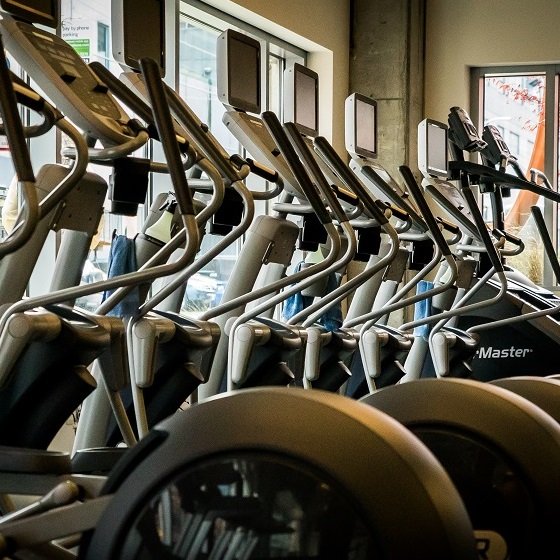Everybody feels good about going to the gym (whether they like it is an article for another time). But during that time at the gym, are you really getting the most bang for your buck? Aside from the common distractions that we see at the gym, such as chatting with fellow members, watching Donald Trump put his foot in his mouth and searching for Pikachu under the leg press, there are other ways that can make your time at the gym less effective than it could be. Below are five common mistakes that people make that could wreak havoc on reaching your health and fitness goals
You have no plan: I have touched on this multiple times in various blogs, as I truly believe this is one of the biggest mistakes you can make when entering the gym. When I say a plan, I mean specifics like exercises, sets, reps, percentage of max and rest time, not “uuuuuh I’m doing chest and tri’s today.” Further, a plan should be divided into multiple 3-6 weeks “phases” in which the aforementioned variables change to ensure the body is challenged and can continue to make progress. Contrary to popular belief, you do not need to have 365 different workouts for each day of the year; making slight changes to your workout plan every four to six weeks will ensure far better results and allow you to track improvements more effectively.
Have no clue how to design a training program? Enlist the help of a personal trainer, or go online to receive coaching and programming from a reputable trainer
You don’t keep a journal: This is a subcategory of No. 1. Whether you decide to have a plan or not, at least write down what you did (this includes exercises, sets, reps, weights and rest time) so you can know what you have done and where you are going. A journal only costs a few bucks and can make a huge difference in your training and results. It also prevents you from getting injured by going too heavy on a particular exercise.
You “warm up” on cardio equipment: By pedaling on a bike, walking or jogging on a treadmill, or pumping back and forth on an elliptical trainer, you have only tackled one or two of the major components of a proper warmup. During your 10 minutes of wasted time on these pieces of equipment, you have done nothing to deal with knots (generally referred to as adhesion) found in your muscles. You have not addressed joint mobility in the ankles, hips and shoulders. You have not stimulated the nervous system. You have only worked in one of three planes (frontal, sagittal and transverses) of motion. You have done nothing to warm up the movements typically found in a comprehensive workout.
To sum it up, the body has not been properly prepared for the ensuing workout, and it will lead to poor performance. Instead, go through a 10- to 15-minute movement-preparation routine that incorporates foam rolling, joint mobilization and dynamic movements (squatting, kneeling, lunging, pushing, pulling, reaching, jumping, skipping, rotating) that put the body through various ranges and planes of motion and gives the nervous system a much-needed wakeup call. Further, this form of warming up ensures that you are improving muscular activation, joint mobility and flexibility on an ongoing basis. By doing warm ups properly, you will find that with each workout, you are squatting lower, recovering quicker, lifting bigger weights and feeling better outside of the gym. It is simply more bang for your buck!
You use light weights: To get your body to respond in a positive way (such as changes in body composition, increases in strength, increase in conditioning, improved range of motion), you have to stress the body to a point that it wants to make a change or adaptation in order to meet the implied demands. If you come into the gym and stay in (or below) your comfort zone, you have essentially done nothing but ensure you are the same person leaving the gym as you were coming in. If you are banging out sets of 15 reps of shoulder presses with five-pound dumbbells (but are capable of doing 3x that weight) because you don’t want to get bulky, guess what? You have succeeded; you won’t get bulky. But you also won’t lose body fat, get stronger, build fat-burning muscles or be in better shape. You will just be good at wasting your time pressing five-pound dumbbells over your head for 15 reps. The same is true with conditioning: if you are on the treadmill, chatting it up with your buddy or reading the Financial Times, be prepared for dismal results. Here is the truth: Fitness requires some hard work. Get comfortable being uncomfortable!
You don’t fuel your workout: When I had an athlete who basically had a shitty workout, I never once asked, “Did you have a tough day at school?” or, “Are you a little under the weather?” Nope. My first request was, “Tell me what you ate today.” Nine times out of ten, they ate like crap or ate nothing at all. Your body is going to perform as well as the fuel you put in. So if you come to a 6:00 p.m. workout and your last meal was at noon, get ready for a less-than-stellar workout.
As a rule of thumb, you should consume your pre-workout meal around two to three hours before your workout. (This varies greatly from person to person. I tend to be more of a 75 to 90 minute type of person.) The meal should consist of primarily slow-releasing carbohydrates (such as oatmeal, yams, brown rice, whole-wheat toast, certain fruits) that ensure a consistent source of fuel during your workout and keep blood-sugar levels in check. Limit your proteins to those that contain a low amount of fat (such as turkey, chicken, egg whites, yogurt) and try your best to avoid fatty meals and oils. I am also a fan of a little pre-workout pick-me-up, such as a caffeine-rich beverage like green tea. (Note, this is my only source of caffeine throughout the day. If you are one of those people who has four cups of coffee before noon, I’d avoid this step). Not only does a pre-workout meal give you the fuel to crush your workout, it also helps muscle recovery, protein synthesis (crucial for muscle growth) and prevents you from burning muscle during your workout (catabolism = very, very bad).
There you have it: Five things that I have found to negate the positives of coming to the gym. While I will always encourage going to the gym over not going to the gym, you need to make sure you are utilizing your time to the fullest. As we all know, time is a precious commodity (as is our health) and it behooves all of us to train smarter (as well as harder) to make your 30-, 60-, or 90-minute workout pay dividends in the long run. Do your best to avoid all of these common mistakes and it will change your life and make your time at Flow worth every minute!

